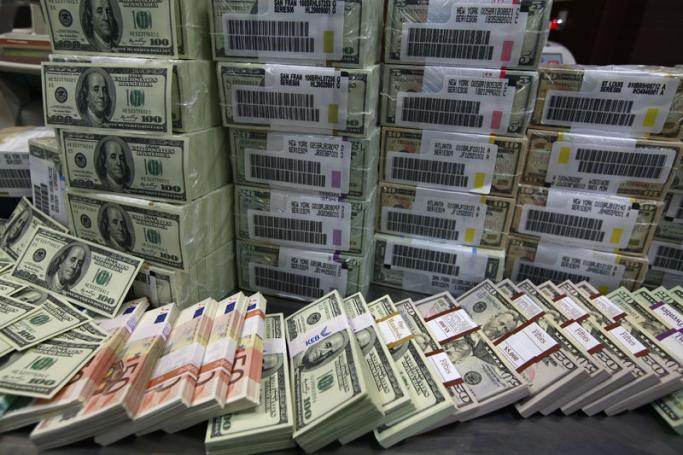Nearly US$20 billion flowed illegally out of Myanmar between 1960 and 2013— draining domestic resources, driving the underground economy, exacerbating inequality, and facilitating crime and corruption—according to a report released on 9 September by Global Financial Integrity (GFI), a Washington DC-based research and advocacy organization.
Titled “Flight Capital and Illicit Financial Flows to and from Myanmar: 1960-2013,” the study finds that trade misinvoicing—the fraudulent over- and under-invoicing of trade transactions—accounted for the majority of the country’s illicit financial outflows (59.6 percent) and inflows (89.2 percent) over the 54-year period analyzed.
“Myanmar has a very serious problem with illicit financial flows, and curtailing them should be a priority for the government that forms following the forthcoming elections,” noted GFI President Raymond Baker, a long time authority on financial crime. “Illicit flows have drained billions of dollars from Myanmar’s official economy; this money could have otherwise been used to help the nation’s economy grow. Beyond the direct loss to the economy, these flows are driving the underground economy, fueling crime and corruption, and costing the government significant revenue.”
Findings
Authored by GFI Chief Economist Dev Kar and Junior Economist Joseph Spanjers, the study estimates that illicit financial flows from Myanmar totalled US$18.7 billion from 1960 through 2013, with annual average illicit outflows averaging 6.5 percent of the country’s GDP. Illicit inflows totalled a staggering US$77.7 billion over the 54-year period; nearly half of those inflows (in real terms) occurred during the last four years of the study, 2010-2013. On average, Myanmar’s illicit inflows are equivalent to 14.4 percent of its GDP.
“Illicit outflows drain capital from Myanmar’s economy, facilitate tax evasion, exacerbate inequality, and deplete domestic savings,” said Dr.Kar, who served as a senior economist at the International Monetary Fund before joining GFI. “It is greatly concerning that illicit inflows have grown significantly in recent years, averaging under US$400 million per annum in the 1960s, they’re averaging over US$8 billion per year today. Unless corrective actions are taken, the economic toll of these illicit flows will only continue to grow.”
Both the inward and outward illicit movements of money deprive the government of crucial tax revenue. By applying relevant tax rates on illicit flow figures, the report estimates lost tax revenue due to illicit flows and compares it to Myanmar’s public spending on health and education.
“Tax losses due to illicit flows have robbed the country of crucial public funds. The magnitude of this loss is not insignificant; it averaged 122-172 percent of health expenditures and 48-73 percent of education spending from 1960-2013,” explained Mr. Spanjers, the report’s co-author. “Even more troubling, approximately 30 percent of this tax loss occurred in the last four years of the study. This means that some individuals have been taking advantage of increased economic openness for personal gain, at the expense of the rest of the country.”
Broad Flight Capital
In addition to estimating illicit flows of capital to and from Myanmar, the study also estimates that broad capital flight—a combination consisting of both licit and illicit flows—amounted to US$35.9 billion in outflows between 1960 and 2013. Broad flight capital inflows stood at US$82.8 billion.
Underground Economy
The report also found that the underground economy averaged 55.1 percent of official GDP over the 54-year period, increasing from an average of 49.3 percent in the 1960s to 66.1 percent in the 1980s before falling from 2008 through 2013, potentially as a result of increasing economic openness.
The study finds that total illicit financial flows drive and are driven by the underground economy, implying that efforts to curtail illicit financial flows would also significantly reduce the size of the underground economy.
Updated 11 September
You are viewing the old site.
Please update your bookmark to https://eng.mizzima.com.
Mizzima Weekly Magazine Issue...
14 December 2023
Spring Revolution Daily News f...
13 December 2023
New UK Burma sanctions welcome...
13 December 2023
Spring Revolution Daily News f...
12 December 2023
Spring Revolution Daily News f...
11 December 2023
Spring Revolution Daily News f...
08 December 2023
Spring Revolution Daily News f...
07 December 2023
Diaspora journalists increasin...
07 December 2023
NLD candidate in Tatkone township shot with a slingshot












